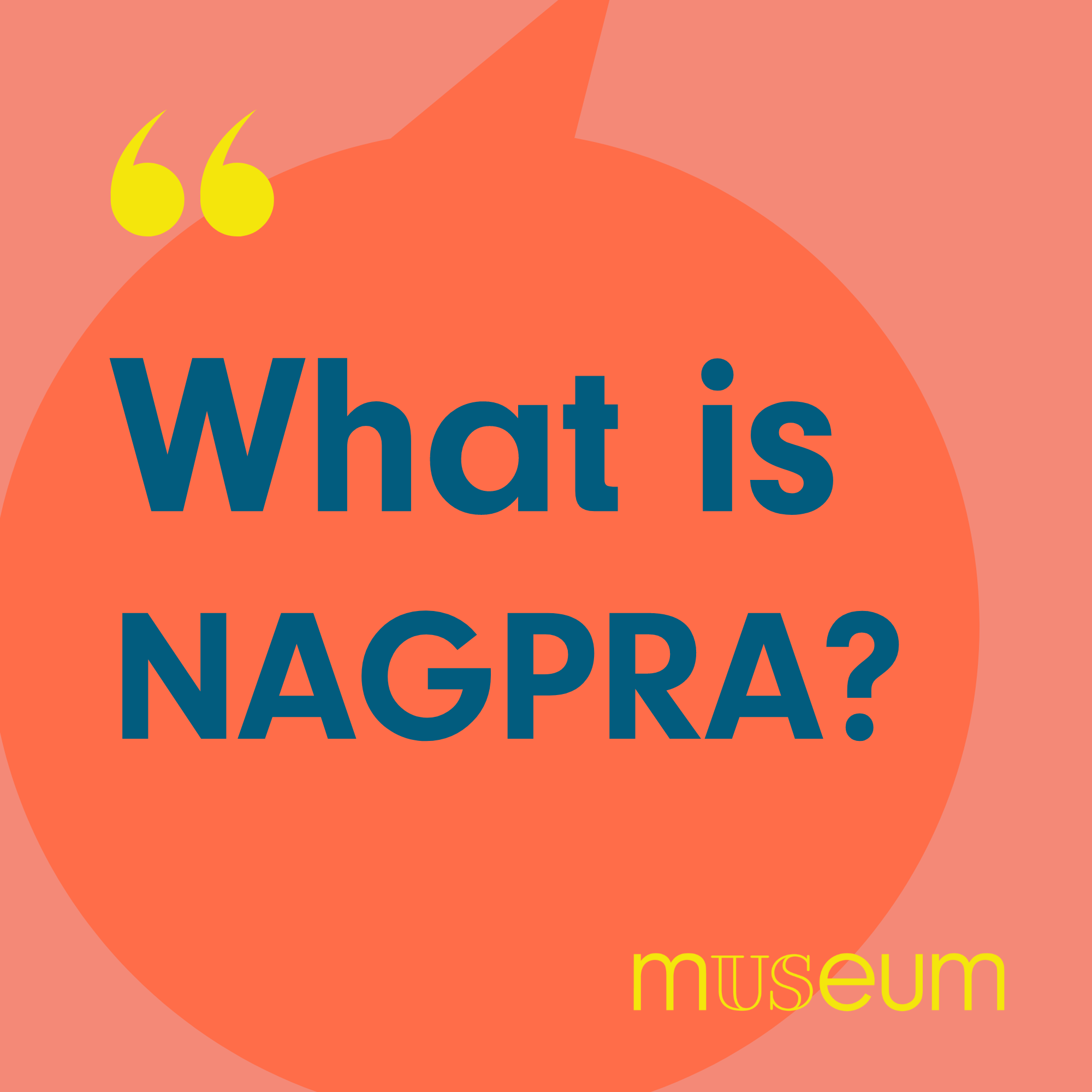The Museum is open daily from 10 a.m. to 5 p.m.
The Museum will be closed on December 25, 2026. Plan your visit
What is NAGPRA?

NAGPRA, which stands for the Native American Graves Protection and Repatriation Act, is a federal human rights law enacted in 1990 to ensure the return of items of cultural patrimony and sacred importance, as well as human remains and funerary items, to their relatives. This is done through a detailed and collaborative consultation process between tribal representatives and the museum or institution that currently possesses the ancestors and/or items.
In the book, Plundered Skulls and Stolen Spirits, Chip Colwell interviews Joe Big Medicine, Jr., a Cheyenne elder. He asked, “Can repatriation heal?” Joe Big Medicine’s response was “NAGPRA doesn’t heal… but the process does”.
NAGPRA holds museums and institutions accountable for the unethical stewardship of Native American and Indigenous cultural resources and ancestral human remains. This process of creating relationships with Native tribes and Indigenous communities requires organizations to approach the work with honesty, respect, and accountability; and to listen to each group’s individual needs and wants. However, NAGPRA only applies to the 574 federally-recognized Native tribes in the United States and has limited application for any non-federally recognized or state government-only recognized Native tribes. While NAGPRA does not require museums and federal agencies to consult with non-federally recognized Indigenous tribes, these groups may seek the return of Native American human remains and cultural items by working with federally recognized tribes.
At the Museum of Us, we view NAGPRA as the floor, not the ceiling. In 2018, we enacted our Colonial Pathways Policy, which allows for the return of any cultural resource currently held at the Museum of Us to its descendant community if it was acquired through a colonial pathway. The policy prioritizes Native/Indigenous knowledge regarding a cultural resource’s provenance, a term meaning the origin of an object or human remains and how they arrived at the museum. This policy allows us to go beyond NAGPRA, and authentically build relationships with Native and Indigenous communities from other countries as well as within the United States.
We also acknowledge that much of our historic efforts in repatriation did not meet the needs of descendant communities and actively harmed some in the process. It is only through their willingness to keep collaborating, and directing our efforts in recent years, that we have been able to grow and move forward in ways that respect and prioritize these needs. We thank these communities for their time, efforts, and persistence in holding the museum accountable. Moving forward, we recognize that we have a long road ahead, and this work will be a priority for the next several years. NAGPRA and our Colonial Pathways Policy help us take the required steps to a more equitable future.
Learn more about our cultural resources policies on the Cultural Resources page.
The Museum of Us recognizes that it sits on the unceded ancestral homeland of the Kumeyaay Nation. The Museum extends its respect and gratitude to the Kumeyaay peoples who have lived here for millennia.
The Museum is open daily, Monday through Sunday, from 10 a.m. to 5 p.m.
1350 El Prado, San Diego, CA 92101
